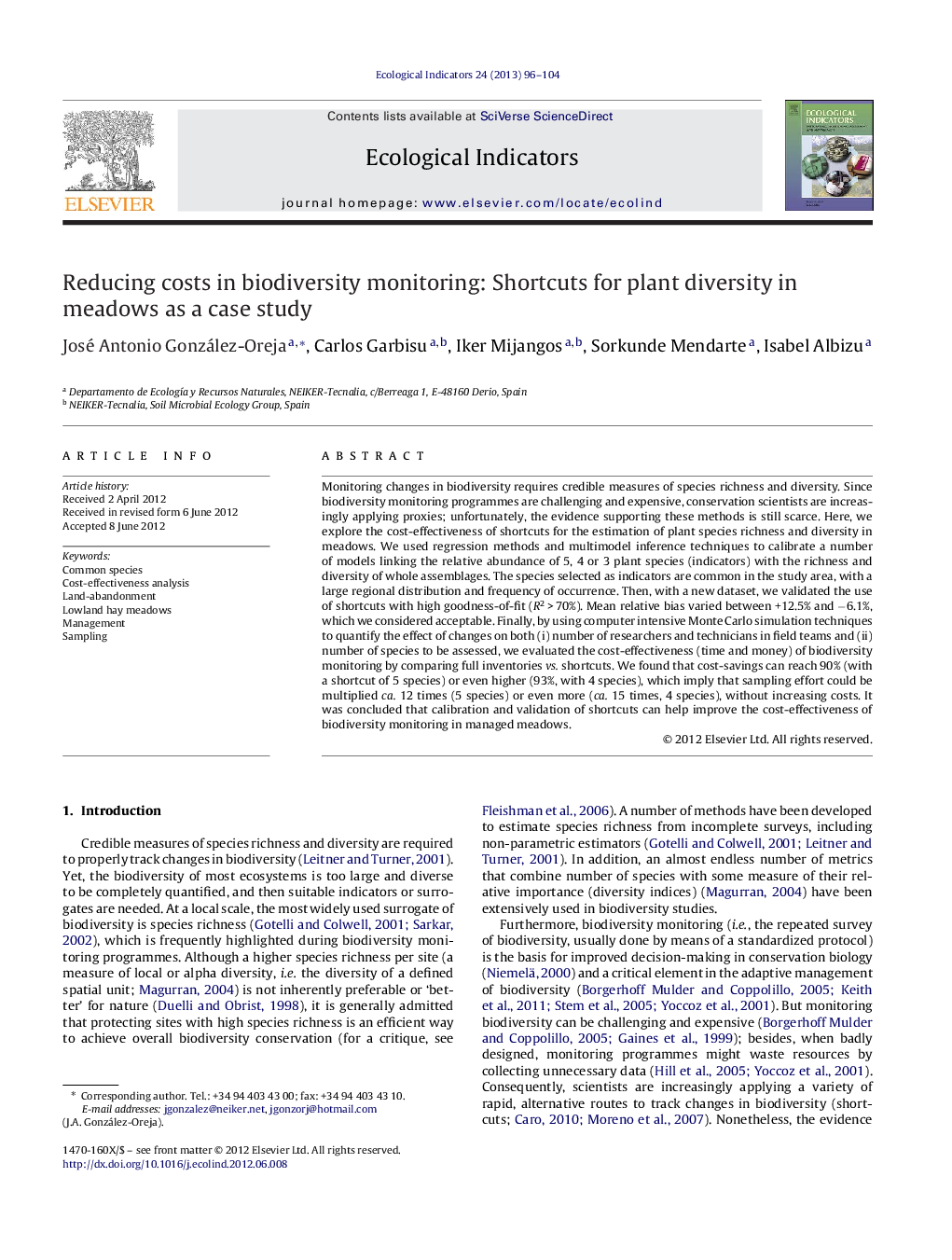| Article ID | Journal | Published Year | Pages | File Type |
|---|---|---|---|---|
| 4373625 | Ecological Indicators | 2013 | 9 Pages |
Monitoring changes in biodiversity requires credible measures of species richness and diversity. Since biodiversity monitoring programmes are challenging and expensive, conservation scientists are increasingly applying proxies; unfortunately, the evidence supporting these methods is still scarce. Here, we explore the cost-effectiveness of shortcuts for the estimation of plant species richness and diversity in meadows. We used regression methods and multimodel inference techniques to calibrate a number of models linking the relative abundance of 5, 4 or 3 plant species (indicators) with the richness and diversity of whole assemblages. The species selected as indicators are common in the study area, with a large regional distribution and frequency of occurrence. Then, with a new dataset, we validated the use of shortcuts with high goodness-of-fit (R2 > 70%). Mean relative bias varied between +12.5% and −6.1%, which we considered acceptable. Finally, by using computer intensive Monte Carlo simulation techniques to quantify the effect of changes on both (i) number of researchers and technicians in field teams and (ii) number of species to be assessed, we evaluated the cost-effectiveness (time and money) of biodiversity monitoring by comparing full inventories vs. shortcuts. We found that cost-savings can reach 90% (with a shortcut of 5 species) or even higher (93%, with 4 species), which imply that sampling effort could be multiplied ca. 12 times (5 species) or even more (ca. 15 times, 4 species), without increasing costs. It was concluded that calibration and validation of shortcuts can help improve the cost-effectiveness of biodiversity monitoring in managed meadows.
► Biodiversity monitoring is expensive, but rapid shortcuts can be cost-effective. ► Shortcuts for plant species richness and diversity were calibrated and validated. ► Monte Carlo simulations suggest that cost-savings could reach up 90–93%. ► Using the proposed indicators, sampling effort could be multiplied ca. 12–15 times.
